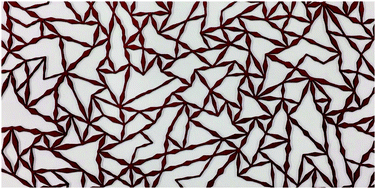Ideal isotropic auxetic networks from random networks
Abstract
Auxetic materials are characterized by a negative Poisson's ratio, ν. As the Poisson's ratio approaches the lower isotropic mechanical limit of ν = −1, materials show enhanced resistance to impact and shear, making them suitable for applications ranging from robotics to impact mitigation. Past experimental efforts aimed at reaching the ν = −1 limit have resulted in highly anisotropic materials, which show a negative Poisson's ratio only when subjected to deformations along specific directions. Isotropic designs have only attained moderately auxetic behavior or have led to solutions that cannot be manufactured in 3D. Here, we present a design strategy to create isotropic structures from disordered networks, which result in Poisson's ratios as low as ν = −0.98. The materials conceived through this approach are successfully fabricated in the laboratory and behave as predicted. ν depends on network structure and bond strengths; this sheds light on the motifs which lead to auxetic behavior. The ideas introduced here can be generalized to 3D, a wide range of materials, and a spectrum of length scales, thereby providing a general platform that could impact technology.



 Please wait while we load your content...
Please wait while we load your content...
